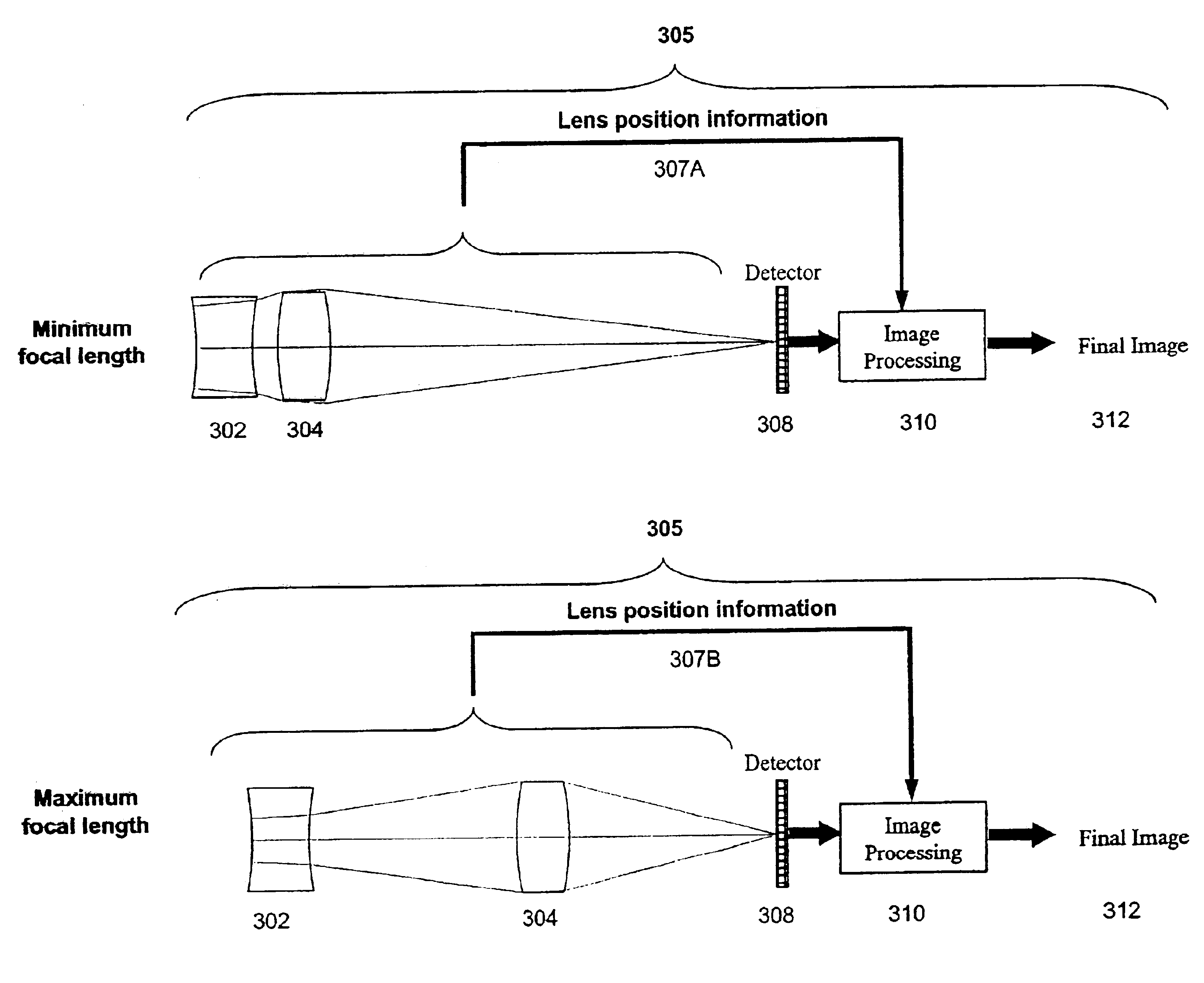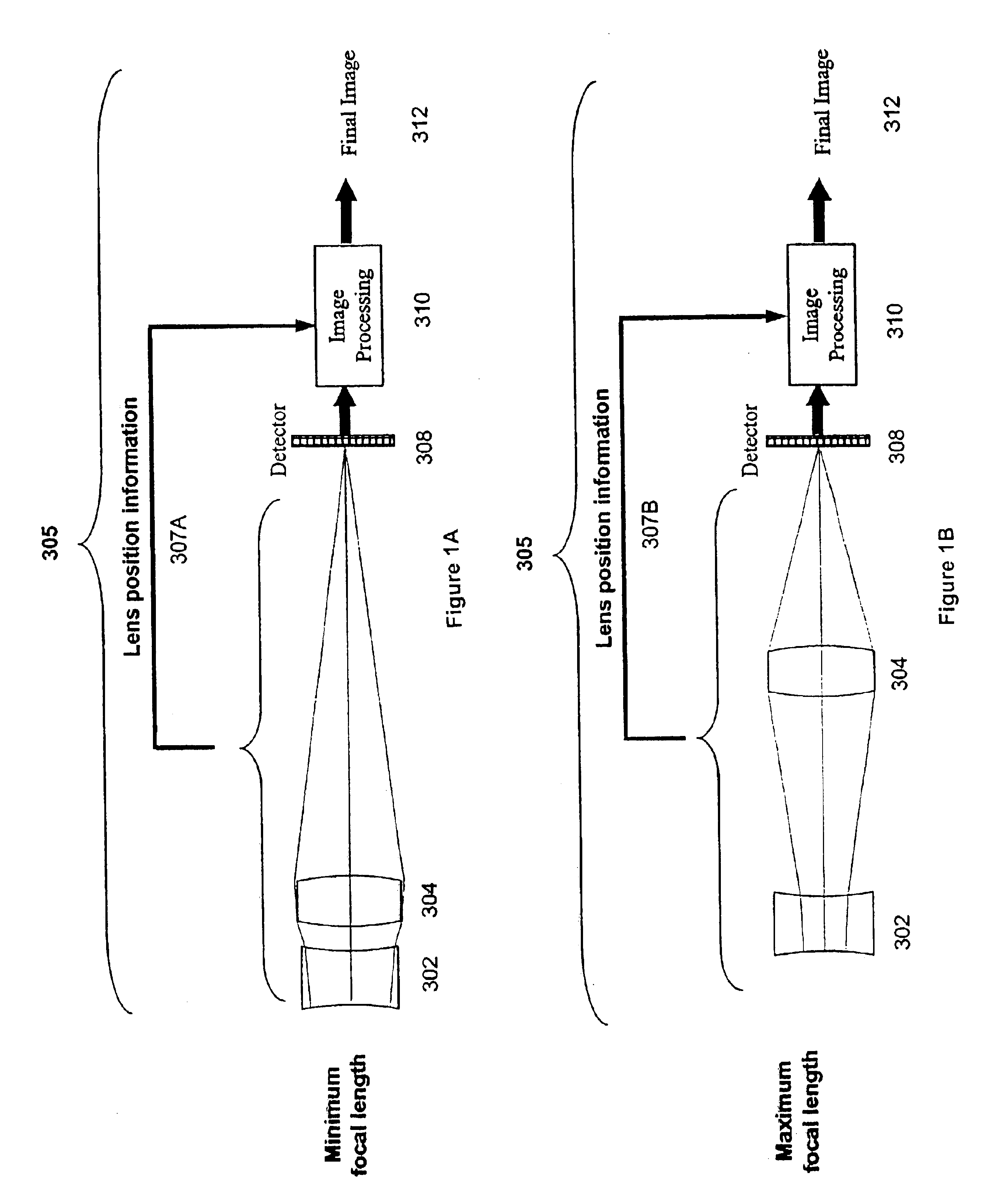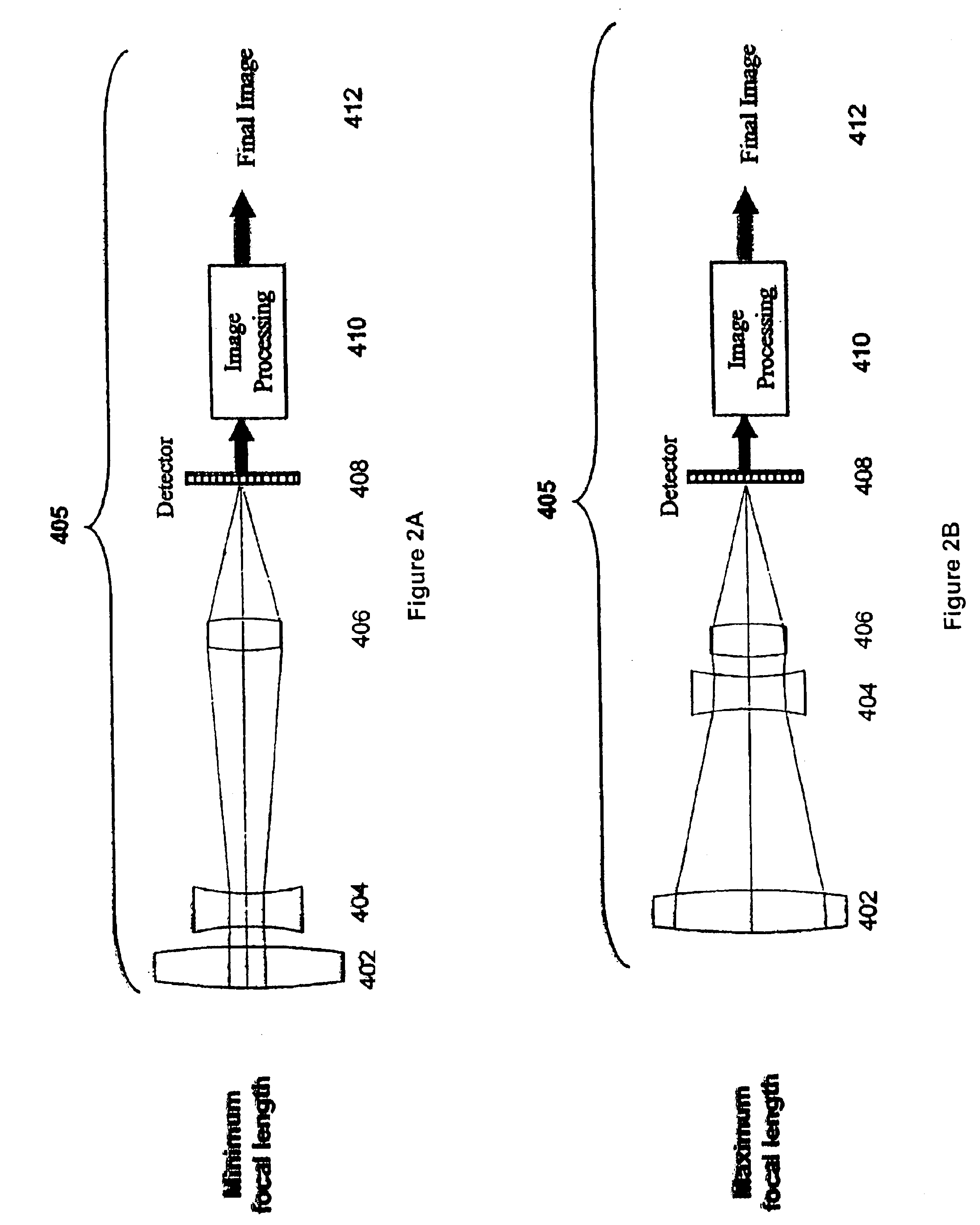Wavefront coding zoom lens imaging systems
a zoom lens and imaging system technology, applied in the field ofwavefront coding zoom lens imaging systems, can solve the problems of difficult to accommodate aberration in a zoom lens with few lenses, and achieve the effects of reducing the cost of the zoom lens imaging system, high quality, and fast zoom lens imaging
- Summary
- Abstract
- Description
- Claims
- Application Information
AI Technical Summary
Benefits of technology
Problems solved by technology
Method used
Image
Examples
Embodiment Construction
[0025]By coding the image forming wavefront and performing image processing on the resulting images zoom lenses can be designed that are very fast (small F / #) with a reduced number of optical elements. These zoom lenses can also have a very wide field of view and the equivalent of a flat image plane. By coding the wavefront and using image processing the zoom system can have an increased the depth of field and depth of focus well as reduced system sensitivity to misfocus aberrations. The extension of the depth of focus also means that the zoom lens can be made insensitive to temperature changes. In a similar fashion, manufacturing and assembly tolerances can be relaxed so that the accuracy with which the optics and detector array must be placed is reduced.
[0026]There are two primary forms of zoom lens systems that use Wavefront Coding. The first form, shown in FIG. 1A and FIG. 1B, uses as few as two lens elements 302, 304. By changing the distance between the two lens elements 302, ...
PUM
 Login to View More
Login to View More Abstract
Description
Claims
Application Information
 Login to View More
Login to View More - R&D
- Intellectual Property
- Life Sciences
- Materials
- Tech Scout
- Unparalleled Data Quality
- Higher Quality Content
- 60% Fewer Hallucinations
Browse by: Latest US Patents, China's latest patents, Technical Efficacy Thesaurus, Application Domain, Technology Topic, Popular Technical Reports.
© 2025 PatSnap. All rights reserved.Legal|Privacy policy|Modern Slavery Act Transparency Statement|Sitemap|About US| Contact US: help@patsnap.com



